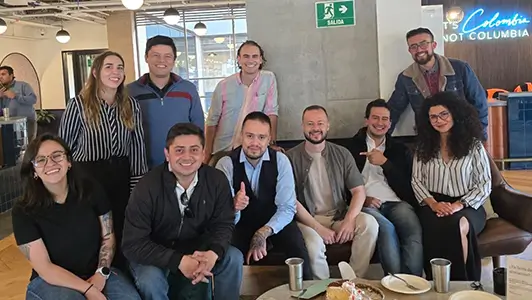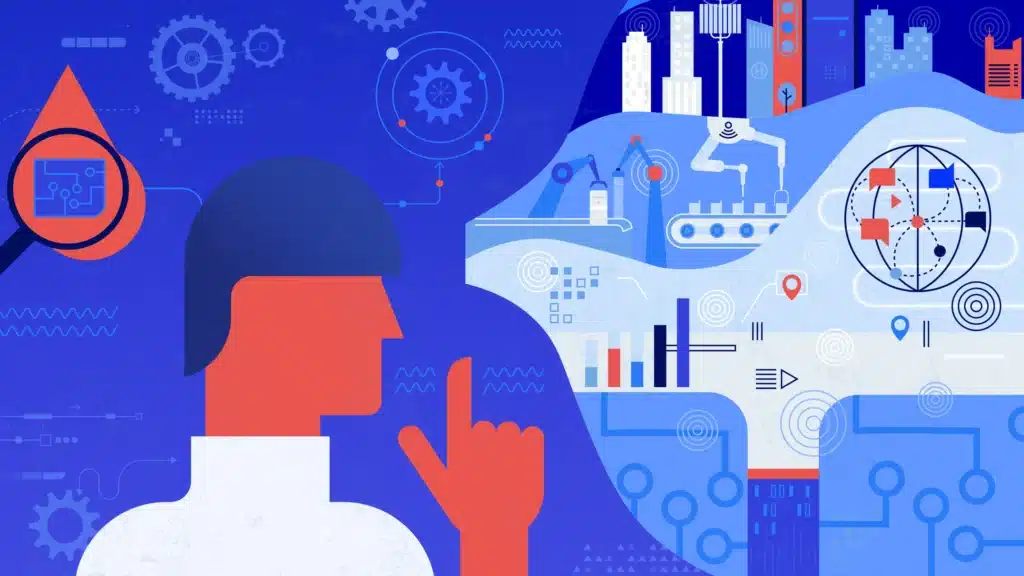A fan of campy 1980s movies found themselves watching Electric Dreams, a quirky 1984 film about a boy, a girl, and a computer entangled in a bizarre love triangle. In one scene, the male lead, Miles, casually brings up artificial intelligence during a date. When he asks Madeline, his date, what she thinks of AI–a machine that can create art, or write poetry or compose music–she responds with a simple but pointed question: “What’s wrong with artists?”
That line lingered long after the credits rolled. It prompted a reflection on the growing reliance on AI in creative and professional work, and the hidden pitfalls that come when people or organizations aren’t intentional about the role AI plays in their processes.
What gets lost in all the discussion, positive and negative, about generative AI is the value of human context. Context is not data alone; it’s how an individual interprets a situation using their accumulated experience, judgement, and skill. While generative AI offers powerful tools for augmenting creativity and productivity, its growing adoption risks fostering overconfidence and dependency unless individuals and organizations intentionally pair it with expertise and foster critical thinking.
Context is king
The critical ingredient in unlocking the potential of generative AI is not the model itself, but the ideas and perspectives provided by the users. Context, shaped by judgment, experience, and domain-specific insight, is what transforms a generic AI output into something valuable and meaningful. Rather than outsourcing the creation of insights to the model, individuals should treat AI as a collaborator that helps refine, expand, or challenge their thinking. This approach not only preserves the integrity of innovation but also produces more relevant results. When context leads and AI follows, the combination can amplify creativity and accelerate progress without sacrificing depth or originality.
Generative AI excels at surfacing patterns, offering suggestions, and accelerating routine tasks, but it is limited without guidance. The most effective use of these tools stems from users who understand how to frame problems, define objectives, and provide rich context that reflects their intent. In this way, AI becomes an extension of human capability rather than a substitute for it. By anchoring AI interaction in clearly articulated ideas and informed positions, users maintain creative control and avoid the pitfalls of generic or derivative outputs. The lesson is simple but essential: context is not optional; it is the foundation on which generative AI can truly serve as a force multiplier.
The traps
Using generative AI without providing context can make an individual or organization susceptible to two possible traps: the illusion of insight and dependency on generative AI. In the first, users mistake fluent AI output for expertise, overlooking the lack of depth that comes without human judgment or experience. In the second, repeated reliance on AI dulls critical thinking, as users default to generic outputs instead of bringing their own perspective. Without context, AI tends to reflect the average rather than support innovation. The result is work that lacks originality and users who lose touch with the skills that make their contributions valuable.
The hubris hall of mirrors: why AI fluency doesn’t equal expertise
The first trap can be described as the Hubris Hall of Mirrors. As generative AI and large language models gained traction, models such as GPT, Claude, and LLaMA inspired a sense of wonder that quickly gave way to misconceptions. The language around these tools, which includes terms like “reasoning” and “intelligence”, blurred the lines between what AI can do and how it functions.
Many users, dazzled by the apparent sophistication, began to overestimate their own abilities, believing they could compose music, generate high-quality art, or become proficient writers and developers overnight with the help of AI. This illusion of capability obscures the reality that the output from these models often lacks depth, context, and refinement. Worse still, the allure of attention or acclaim for AI-assisted work may lead some to chase recognition without doing the hard work that underpins true craftsmanship.
In the end, there is no substitute for lived experience. Artists, developers, and creators earn their skill through iteration, not automation.
The dependency trap: the atrophy of contextual thinking
The second trap is overdependence on AI. While reliance on technology is not new, the breadth and accessibility of generative AI can amplify this dependence dramatically. Individuals and organizations alike are susceptible. What many forget is that large language models are trained on vast datasets and are fundamentally probabilistic and designed to produce outputs that mirror the average, not the exceptional. For organizations striving to differentiate themselves in the market, this presents a clear problem. Relying on outputs that normalize toward the mean may undermine innovation and result in offerings that blend into the background rather than stand out. The ease and speed of AI-generated content can become a crutch, dulling the creative edge and diluting quality over time.
How to use generative AI without losing your edge
Avoiding the pitfalls of overconfidence and dependency requires a deliberate shift: treat generative AI not as an oracle, but as a collaborator guided by human context. Embedding perspective, intent, and domain knowledge into each interaction is what separates impactful use from average output. Here are three strategies to make that shift real:
1. Lead with perspective: frame before you generate
Effective use of generative AI starts with clearly articulating your own ideas, goals, or hypotheses before prompting the model. Whether writing, designing, or problem-solving, the most valuable outputs come when users set the direction. Encourage teams to document their assumptions or outline their desired outcomes before using AI tools, then use the AI to expand, test, or challenge those positions, not replace them. This practice ensures that context drives the process, rather than being an afterthought.
2. Build context into systems: customize inputs and environments
Generic prompts lead to generic results. Embedding organizational knowledge, such as style guides, proprietary datasets, or internal frameworks, into AI workflows provides the model with a richer foundation for generating relevant and differentiated outputs. Where possible, use tools that support retrieval-augmented generation (RAG) or fine-tuning with internal sources. Maintain repositories of reusable context assets so teams don’t start from scratch with each interaction.
3. Train for contextual thinking, not just tool use
Developing AI competency isn’t just about learning how to write prompts, it’s about teaching people how to think with AI. That means training users to recognize when outputs lack nuance and to ask where context is needed. Encourage reflective practices, such as debriefing AI-assisted work, by asking, “What did we bring to this that the AI couldn’t?” or “How did our perspective shape the result?” Embedding this mindset helps preserve judgment, originality, and purpose.
Conclusion: AI is powerful, but context is what makes it meaningful
Ultimately, the most powerful applications of generative AI emerge when human context guides the interaction from the outset. When people bring their own experience and domain insight, AI becomes a tool that sharpens–rather than replaces–human thinking. Consider the example of a product manager drafting a customer-facing FAQ using a generative model. Without input rooted in user behavior, product features, and tone guidelines, the output may sound polished but will likely miss the mark. However, when the manager first outlines key pain points and references past support tickets, the AI can generate content that is accurate, relevant, and time-saving. This is the difference between automation and augmentation. Embedding context at every stage not only counters the risks of shallow outputs and misplaced confidence but ensures that generative AI serves as a meaningful extension of human capability, not a substitute for it.



















